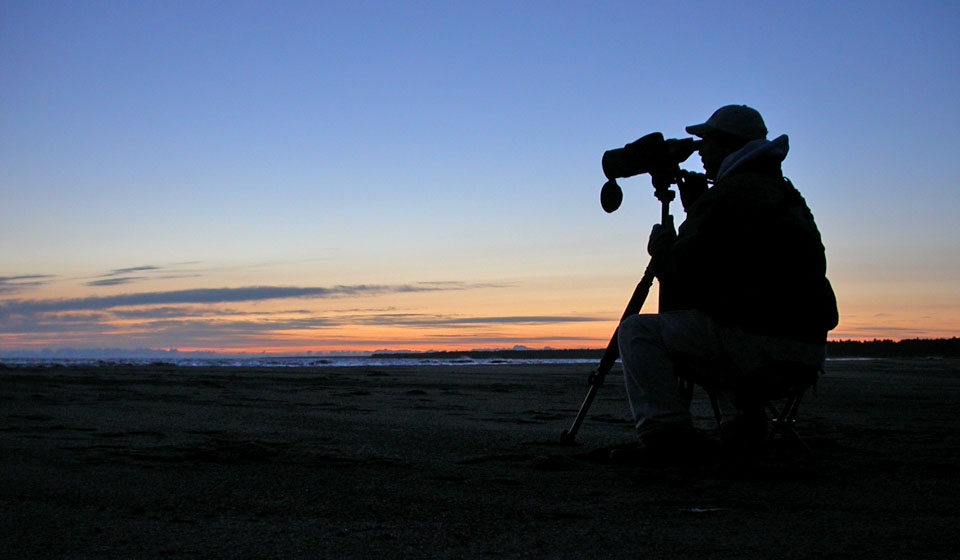Updated COVID-19 Birding Guidance from WSO
The coronavirus crisis may make 2020 the absolute right time for all of us to plan on conducting our own Big Green Birding Year or learning how to set up on your own “patch” on eBird.
Considering recent developments, WSO is toughening its guidance for those who are wondering whether they are still able to get out and bird-watch amid the COVID-19 pandemic. (And we will remain alert for further state and local restrictions as they may arise and encourage you to do so as well.)
On Thursday April 9th Gov. Evers expanded restrictions under the “Safer at Home” Order he issued on March 24. 2020, by ordering the DNR to close 40 state parks, forests and recreational areas due to unprecedented crowds, litter and vandalism and the need to protect the health and safety of visitors and staff, effective Friday, April 10.
When Evers’ order was first issued, WSO advised: “Although travel is discouraged and, in some cases, prohibited, travel for the purpose of engaging in an outdoor activity is also permitted. Therefore, driving or biking to go bird watching is allowed, and visiting public and state parks is specifically permitted.”
Things have obviously changed, lending new emphasis to the last part of our earlier advice: “Travel, however, should remain minimal. The governor’s order stated at the outset that: ‘This is a critical moment in Wisconsin. We must all do our part to cease non-essential travel, business, and social interactions.’”
That also includes the now-familiar physical distancing requirements of six feet of separation between individuals, frequent hand washing, and not shaking hands.
The American Hiking Society recommends staying within 50 miles of home to avoid having to stop for gas, restroom breaks, etc. Many if not most public bathroom facilities are closed, so even driving a short distance — especially with kids — is rolling the dice. Wherever you go, bring hand sanitizer and plan on not being able to use a restroom — that might mean not driving anywhere and staying within walking distance of your own residence. And stay away from popular parks and trails; closure of state parks may overcrowd county parks, forcing their closure as well. If you can't get to a less popular park, stick to walking around your neighborhood.
Why did the state close parks, forest and recreation areas? Many have seen record attendance. For the weekend of April 4-5, High Cliff had an estimated 16,457 visitors, Lapham Peak had an estimated 11,168 visitors, Kohler-Andrae had an estimated 8,469 visitors and Devil's Lake had an estimated 7,647 visitors.
"We know there are benefits to getting outdoors. But not doing this would put people's lives at risk," said DNR Secretary Preston Cole. "With the weather warming we are seeing increases in visitors and a myriad of challenges surrounding social distancing. In order to the protect the public, this is a necessary step."
“Under the Safer at Home order, we must do all that we can to prevent the spread of the COVID-19 virus. The DNR understands the public's need to enjoy the benefits of nature during the COVID-19 pandemic. Although the Safer at Home order recognizes outdoor activity as an essential activity, people wishing to take a break outdoors are advised by public health officials to exercise in your local neighborhoods and maintain a social distance of 6 feet or more…. If the public does not follow social distancing guidelines and vandalizes property, more state parks may have to close.”
For the DNR’s full announcement: https://dnr.wi.gov/news/releases/article/?id=5083
So now is the time for BIGBY Birding
WSO is heading into its FOURTH year of managing the Wisconsin Green Birding Challenge — better known as BIGBY birding. For those of you who need a refresher course on what BIGBY stands for, it means Big Green Birding Year.
This more-than-exciting and heart-healthy form of competitive birding is carbon neutral and relies on human-powered transportation, such as walking, biking or running — whatever mode one prefers, so long as each trip starts from the SAME home base. BIGBY birders do much of their birding by bicycle, and while some are satisfied keeping their trips close to home or within their favorite “patch,” others venture further. In some cases, MUCH further.
Since January 2016, WSO has overseen the BIGBY spreadsheet where competitors keep track of WHO is seeing WHAT birds and WHEN they see them.
Contact Wendy Schultz at bigby@wsobirds.org for more information.
Or create an eBird Patch
An eBird Patch is a series of locations, generally referring to the same area, that can be aggregated and summarized as a single unit. A "patch" can be your local park, neighborhood walk, favorite lake or sewage plant, or refuge wildlife drive - and all your eBird checklists therein.
A patch is meant to be a small area that you bird regularly. Patches should be possible to thoroughly cover in a morning, or a few hours of birding by foot or car.
For more details and to join the 27 “Patch” birders already keeping their records on eBird check it out at https://support.ebird.org/en/support/solutions/articles/48001049078-patch-and-yard-lists-in-ebird


